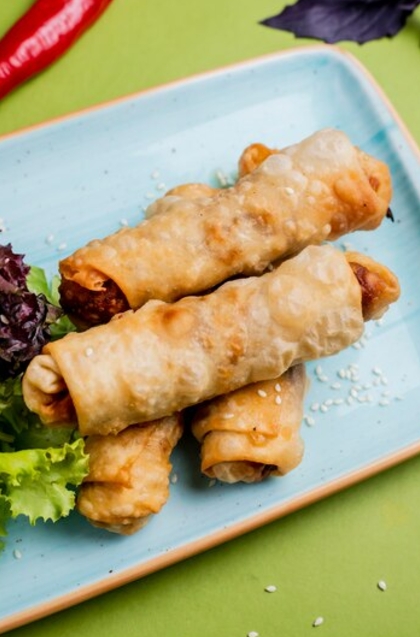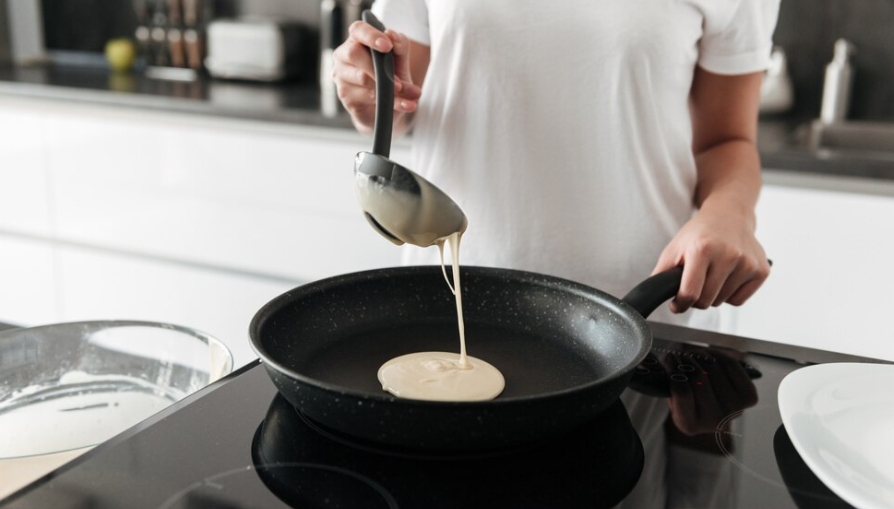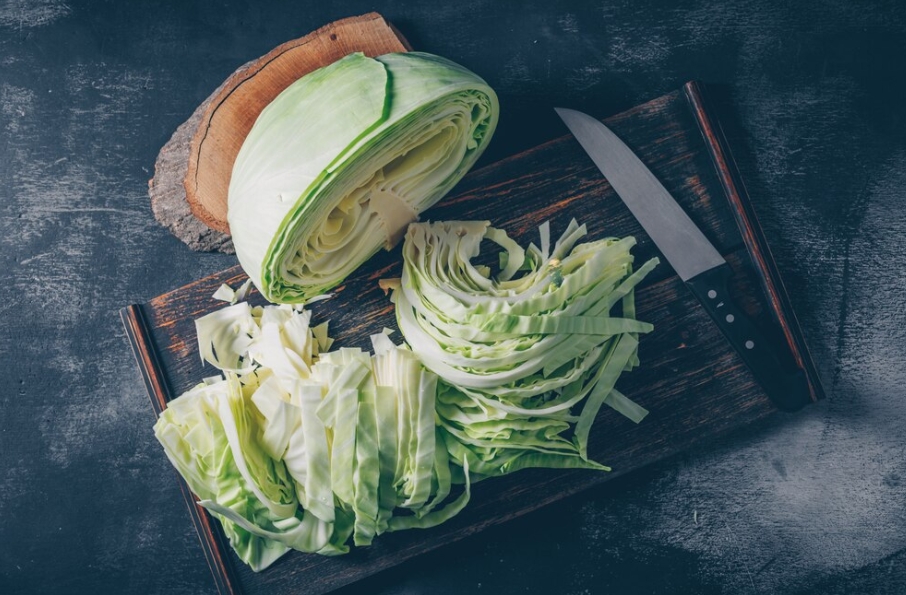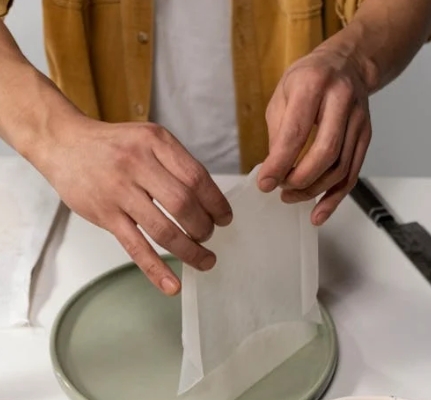Spring rolls are a tasty, adaptable, and international cuisine. These fresh and crispy rolls, which originated in East Asia, are now a popular around the world because of their flavorful and filling textures. Spring rolls are a celebration of fresh ingredients wrapped in delicate layers and are traditionally consumed during the Chinese Spring Festival as a sign of prosperity and fresh starts.
These rolls are always impressive, whether you’re enjoying the golden, crispy shelled deep-fried form or the fresh, rice paper-wrapped spring rolls. With fillings that range from savory meats to crisp veggies, each mouthful offers a pleasing blend of crunch and tenderness.
You can learn how to make homemade spring rolls using this recipe. In order to get that desired crispy texture, you’ll learn how to make the ideal filling and roll them tightly for frying. You can change the filling to make these vegetarian, vegan, or even seafood-inspired, which is what makes cooking them at home so much fun.
Not only are you making a meal with this recipe, but you’re also adopting a culinary tradition that’s as much fun to prepare as it is to consume. For cooks of all skill levels, creating the ideal spring rolls is a fascinating culinary adventure that is full of taste and inventiveness.
What You Can Learn From This Recipe?
Essential skills like julienning veggies, tightly folding spring rolls, and frying them to the ideal golden-brown crispiness are all taught in this recipe. With a combination of sweet, tangy, and salty components in the filling, you’ll also learn how to balance flavors.
What I Love About This Recipe?
I adore how spring rolls can be customized! When served with a substantial salad or soup, they can be a light snack, a party starter, or even a full course. Every mouthful is enticing due to the blend of textures—juicy interior and crunchy outside. Additionally, creating them from scratch is very satisfying.
What’s the Best Way to Store Leftovers?
To keep leftover uncooked rolls from drying out, place them in an airtight container covered with a moist paper towel. Additionally, they can be frozen for up to a month; simply set each one on a tray to freeze separately before putting it in a freezer bag. To keep baked rolls crisp, reheat them in the oven or air fryer.
What to Serve With It?
Dips such as peanut sauce, soy sauce, or sweet chili sauce go very well with spring rolls. Serve them with cool cucumber salads, hot and sour soups, or salads with Asian influences. Their flavors go very well with chilled white wine or iced tea for beverages.
Spring Rolls Recipe: Crispy Goodness
Description
A delicious meal with Asian influences, spring rolls blend tasty contents with crunchy wrappers. These rolls are as tasty as they are adaptable, and they may be eaten as a light appetizer, snack, or as part of a larger meal. Because they offer a kaleidoscope of flavors in each bite, spring rolls are adored all over the world for their delicate texture and colorful fillings. These rolls, which are usually served with a dipping sauce, are a popular at both family dinners and gatherings because they have the ideal harmony of savory, sweet, and umami flavors. Spring rolls are a monument to the universal delight of delicious food, regardless of whether you choose the crispy, golden kind or the fresh, non-fried kind.
For the Filling
Spring roll wrappers
For Frying
Instructions to Make Spring Roll
Wrappers Preparation Steps
-
Mix the Dough
- In a mixing bowl, whisk together the all-purpose flour, salt, and cornstarch.
- Gradually add water while stirring continuously to form a smooth, lump-free batter.
- The consistency should be slightly runnier than pancake batter.
-
Rest the Batter
- Cover the bowl with a cloth and let the batter rest for 15-20 minutes.
- This helps relax the gluten, making the wrappers easier to work with.
-
Cook the Wrappers
- Heat a non-stick skillet or a crepe pan over low heat. Lightly grease the pan with oil using a paper towel.
- Pour a ladleful of batter into the center of the pan and quickly swirl it around to create a thin, even layer.
- Cook for 1-2 minutes until the edges lift slightly and the wrapper is no longer translucent. Do not flip.
-
Remove and Stack
- Carefully peel off the wrapper and place it on a clean plate.
- Repeat with the remaining batter, stacking the wrappers with parchment paper between them to prevent sticking.
-
Cool and Store
- Once cooled, the wrappers can be used immediately or stored in an airtight container in the refrigerator for up to 2 days.
- To keep them pliable, wrap them in a damp cloth before using.
Prepare the Filling
-
- Heat sesame oil in a pan over medium heat. Sauté garlic until fragrant.
- Add shredded cabbage, carrots, and bean sprouts. Cook until slightly tender but still crisp.
- Stir in soy sauce and oyster sauce. Toss to combine.
- If using chicken, add it to the pan and mix well. Let the filling cool.
-
Assemble the Spring Rolls
- Lay a spring roll wrapper on a flat surface, with one corner facing you (like a diamond).
- Place 2 tablespoons of filling near the corner closest to you.
- Fold the bottom corner over the filling, then fold in the sides, rolling tightly as you go.
- Seal the edge with a dab of water or a flour paste.
-
Fry the Rolls
- Heat vegetable oil in a deep pan to 375°F (190°C).
- Fry rolls in batches, ensuring they don’t overcrowd the pan. Cook until golden brown, about 2-3 minutes.
- Remove and drain on paper towels to remove excess oil.
Nutrition Facts
Servings 12
- Amount Per Serving
- Calories 120kcal
- % Daily Value *
- Total Fat 5g8%
- Saturated Fat 1g5%
- Cholesterol 10mg4%
- Sodium 200mg9%
- Potassium 100mg3%
- Total Carbohydrate 15g5%
- Dietary Fiber 1g4%
- Protein 5g10%
* Percent Daily Values are based on a 2,000 calorie diet. Your daily value may be higher or lower depending on your calorie needs.
Note
- You can use rice paper for a lighter, fresh version.
- Experiment with fillings—shrimp, mushrooms, or tofu are great options.
Journey of Spring Rolls
A rich culinary heritage, celebration, and prosperity are all echoed in the meal known as spring rolls. Their origins can be traced back to ancient China, when they were first produced as a seasonal treat for the Spring Festival, also called the Lunar New Year. Because of their similar shape and color to gold bars, these golden rolls were a sign of prosperity and good fortune. Spring rolls became a trademark dish in China and other parts of Asia as the tradition expanded widely.
Spring rolls were originally called "chun juan," which means "spring rolls" in Mandarin. A literal celebration of the bounty of the new season, they were fashioned with thin pancakes stuffed with fresh spring veggies. The dish started to change over time as regional variants appeared. Spring rolls evolved into a canvas for culinary innovation, from fresh rice paper versions in Vietnam to crispy fried rolls in Southeast Asia. They were modified to fit the unique ingredients and tastes of each culture, demonstrating the adaptability of this popular food.
The simplicity of spring rolls is what makes them so magical. The thin, flexible sheet that serves as the wrapper is the ideal medium for a riot of flavors and textures. The versatility of the roll is unparalleled, whether it is stuffed with soft meats, crisp vegetables, or even sweet contents. In Vietnam, the "gỏi cuốn" or fresh spring rolls highlight the region's focus on seafood and fresh herbs. In the meantime, lumpia—both fried and fresh—became a beloved meal in the Philippines.
The seasonal and ethnic elements that are available are typically reflected in the filling of spring rolls. Pork, cabbage, and mushrooms are common fillings in China, and they are frequently seasoned with five-spice powder and soy sauce. Southeast Asian variations may feature glass noodles, prawns, and a variety of fresh herbs along with tart dipping sauces. The art of balance never changes—each roll is the ideal combination of umami, sweet, and savory flavors.
They developed a life of their own as spring rolls traveled to the West. Restaurants started serving them as party snacks or appetizers, frequently with creative fillings like cream cheese, avocado, or smoked salmon. The versatility and international appeal of spring rolls are highlighted by their globalization. These days, you may get them in casual restaurants, fine dining establishments, and even grocery shops as frozen snacks.
The association of spring rolls with joy and symbolism is an intriguing observation. Food frequently has symbolic meanings beyond mere subsistence in many Asian societies. The golden look of spring rolls is seen by the Chinese as a symbol of wealth. Families get together to prepare and eat spring rolls during the Lunar New Year, which represents unity and the hope for prosperity in the years to come.
The development of culinary techniques is reflected in the evolution of spring rolls. Originally pan-fried, contemporary modifications may use baking or air-frying to satisfy health-conscious eaters. The core of spring rolls—a cuisine that evokes happiness, nostalgia, and a sense of ethnic pride—remains unchanged in spite of these modifications.
A special mention should be given to the dipping sauce that goes with spring rolls. Vietnamese fresh spring rolls are served with peanut or hoisin sauce, while traditional Chinese spring rolls are typically served with a mild soy-based dip. Thai spring rolls can be paired with a sweet chili sauce, which adds a sweet and spicy flavor to the crispy outside of the roll.
Spring rolls are an experience rather than merely a food. From carefully folding the wrappers to preparing the filling, the process of making them is almost meditative. Because everyone gets to appreciate a work of art, sharing them at a gathering provides a degree of shared satisfaction.
Spring rolls are a testament to the ability of food to transcend boundaries in today's globe. They serve as a reminder of our mutual appreciation of tastes, textures, and the backstories that accompany every morsel. Spring rolls link us to a history of culinary creativity and cross-cultural interaction, whether you're enjoying a freshly fried roll at a busy street market in Bangkok or a healthy baked version at home.
Keep in mind that every roll you produce as you start your own spring roll adventure is an extension of this tradition. From their origins in Chinese celebrations to their contemporary variations, spring rolls have spread around the world, bringing with them the qualities of abundance, rejuvenation, and freshness that characterize spring.
We appreciate you coming along on this tasty cultural and historical tour. May your masterpieces bring you happiness and pleasant memories as you savor the enchantment of spring rolls!






